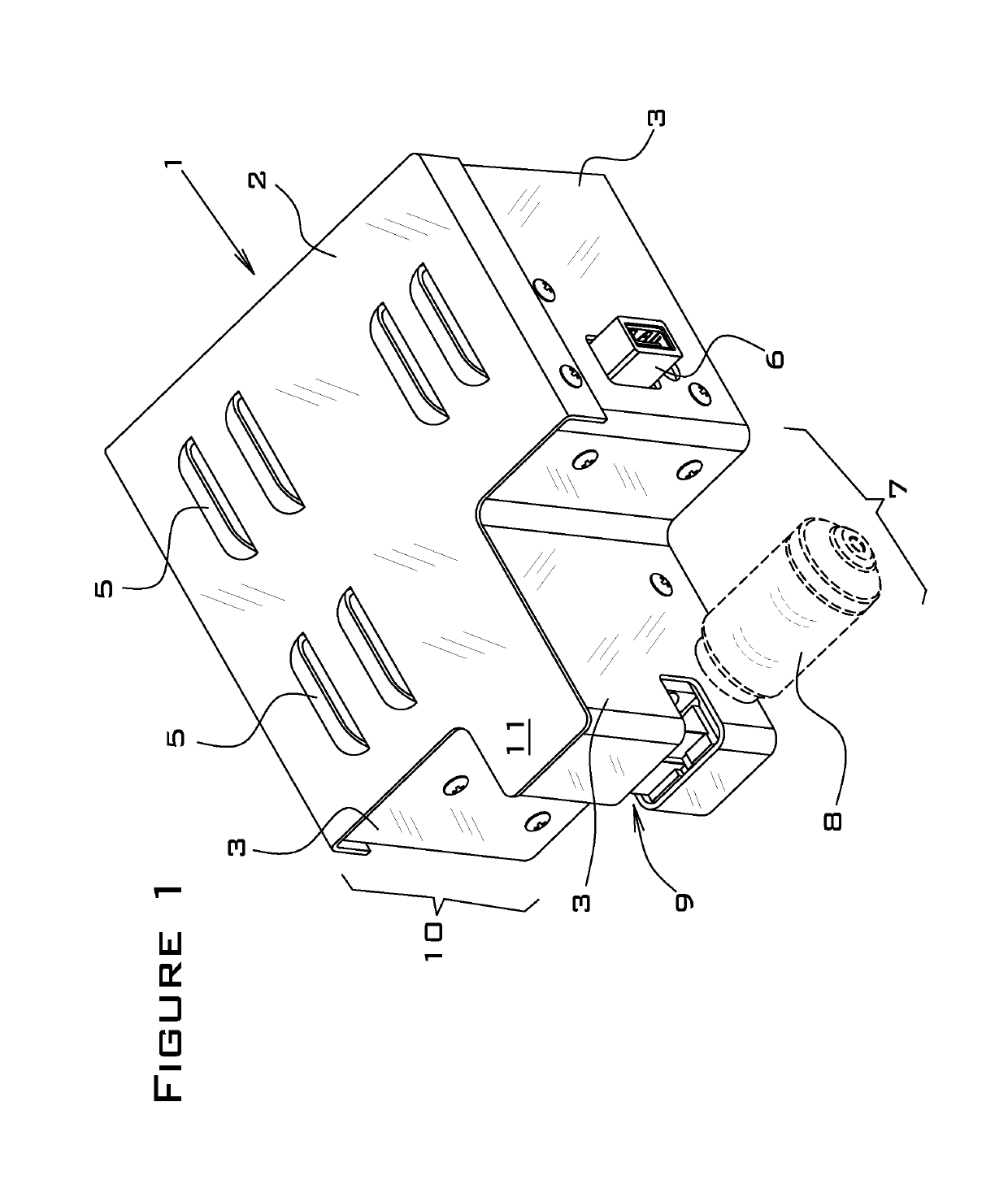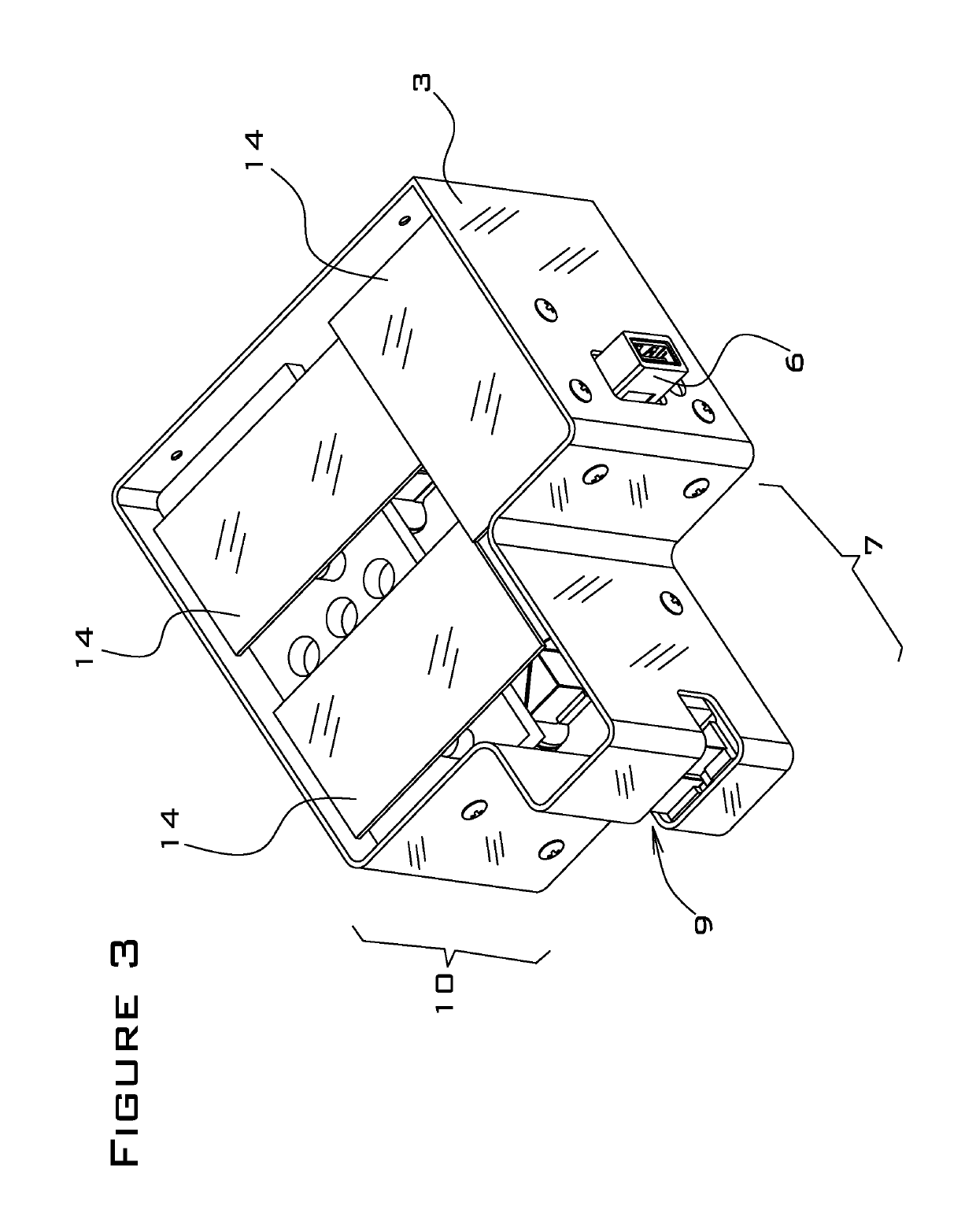Dynamic focus and zoom system for use with wide-field, confocal and multiphoton microscopes
a multi-photon microscope and dynamic focus technology, applied in the field of microscope technology, can solve the problems of damage to samples, unliving, fixed samples, thin samples,
- Summary
- Abstract
- Description
- Claims
- Application Information
AI Technical Summary
Benefits of technology
Problems solved by technology
Method used
Image
Examples
first embodiment
[0106]FIG. 1 is a first perspective view of the present invention. As shown in this figure, the present invention is comprised of a housing that forms an enclosure around the other components of the invention. The housing has a top cover 2, side walls 3 and floor (not shown). The top cover 2 may be attached, secured or connected to or joined with the side walls 3 in any manner; although shown here as attached to the side walls 3 with screws, the present invention is not limited to this particular manner of attaching the top cover 2 to the side walls 3. In an alternate embodiment, the top cover 2 and side walls 3 may be integrally molded (part of the same part) or welded together. The housing 1 may be made of any suitable, durable and rigid material (such as aluminum). In a preferred embodiment, the top cover 2 is comprised of one or more air vents 5 for heat dissipation.
[0107]FIG. 1 also shows the first USB 6. In this invention, there is one USB for each of the three MEMS mirrors (n...
second embodiment
[0120]FIG. 8 is a first perspective view of the present invention in which the objective lens is attached directly to the housing, and FIG. 9 is a second perspective view of the embodiment shown in FIG. 8 in which the objective lens turret is attached directly to the housing. In this particular embodiment, the device can be attached directly to an existing microscope. As shown, the objective lens 8 screws into the housing at position “Y” (see FIG. 6 for position designations) via a first threaded adapter 34 that is integral to the housing 1. The objective lens turret (not shown) screws into the housing at position via a second threaded adapter 35 that is also integral to the housing 1. The main window 9 has been eliminated (because the objective lens and objective lens turret are screwed directly into the housing), and the extension 11 has been lengthened to accommodate the threaded adapters 34, 35, but in all other respects, the invention is as previously described.
[0121]The follow...
third embodiment
[0133]FIG. 13 is a bottom perspective view of the present invention. As shown in this figure, the apparatus may be secured to an optical bench with screws 44. The objective lens turret (not shown) is attached to a second side wall 38 of the housing 36 via a second threaded adapter 45 that is preferably integral to the housing 36. This attachment point is referred to herein as the second portal 59. The slot 46, discussed further in connection with FIG. 16, is also shown.
[0134]FIG. 14 is the same view as that shown in FIG. 12 except with the top cover of the housing removed. As shown in this figure, the USB 41 is connected to a printed circuit board 48 within the housing 36. In a preferred embodiment, the printed circuit board 48 controls all three MEMS mirrors 51, 52, 56. The objective lens 42 and threaded adapters 43, 45 are omitted from subsequent figures for clarity. Note that various threaded adapters may be used to connect either the objective lens 42 or the objective lens turre...
PUM
 Login to View More
Login to View More Abstract
Description
Claims
Application Information
 Login to View More
Login to View More - R&D
- Intellectual Property
- Life Sciences
- Materials
- Tech Scout
- Unparalleled Data Quality
- Higher Quality Content
- 60% Fewer Hallucinations
Browse by: Latest US Patents, China's latest patents, Technical Efficacy Thesaurus, Application Domain, Technology Topic, Popular Technical Reports.
© 2025 PatSnap. All rights reserved.Legal|Privacy policy|Modern Slavery Act Transparency Statement|Sitemap|About US| Contact US: help@patsnap.com



